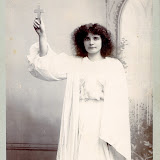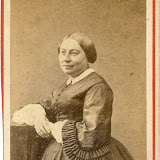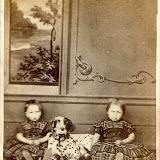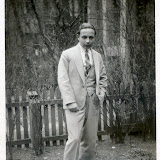“He throws no shadow, he make in the mirror no reflect.”
Bram Stoker, Dracula
“’Photography is one of my hobbies,’ said he. ‘I have made my dark room up there. But, dear me! what an observant young lady we have come upon. Who would have believed it? Who would have ever believed it?’ He spoke in a jesting tone, but there was no jest in his eyes as he looked at me. I read suspicion there and annoyance, but no jest.”
Arthur Conan Doyle, The Adventure of the Copper Beeches
Near the beginning of Dracula, Jonathon Harker travels to Transylvania to finalise the transaction for the English manor house the Count has bought. Describing the house – Harker is a churchman but he speaks like a real estate agent – he admits he has not been inside Carfax but; ‘I have taken with my Kodak views of it from various points’.
Dracula was published in 1896, two years after the first Kodak pocket camera went on the market. The Count may have lived in medieval isolation but the other characters in the novel were up with the very latest in technology. Incidentally, for purists, the snapshots Harker produced would have been round if taken with an older model or rectangular if with the Pocket Kodak but either would have been not much bigger than a postage stamp.
The place photographers occupy in 19th century literature is curious given everybody was supposed to be excited by the new medium. In the last years of the century a few novels came out where a central character was a photographer but for the most part they have a minor role, and not an especially creditable one. They tended to be vapid obsessives or shady, as though they ran a sideline dealing smut.
Here is Jabez Wilson describing his assistant to Sherlock Holmes in The Red Headed League. “Never was such a fellow for photography. Snapping away with a camera when he ought to be improving his mind, and then diving down into the cellar like a rabbit into its hole to develop his pictures.”
And here is a conversation between Holmes and the King in A Scandal in Bohemia.
Holmes laughed. “It is quite a pretty little problem,” said he.
“But a very serious one to me,” returned the King reproachfully.
“Very, indeed. And what does she propose to do with the photograph?”
“To ruin me.”
That Holmes would mistrust photography is natural. He liked ephemeral clues; the hard stuff a photograph might provide interfered with his high minded faith in logic, but was all this a bit of projection on Conan Doyle’s part? It’s ironic that his characters speak of photography as either a petty hobby or a tool for sinister purposes. In 1917 he came close to ruining his reputation when he insisted the infamous photos of the Cottingley fairies were genuine.
The photographer in Nathaniel Hawthorne’s House of Seven Gables needs a proper job. “I dig, and hoe, and weed, in this black old earth, for the sake of refreshing myself with what little nature and simplicity may be left in it, after men have so long sown and reaped here. I turn up the earth by way of pastime. My sober occupation, so far as I have any, is with a lighter material. In short, I make pictures out of sunshine.”
The girl, Phoebe, is unimpressed. "A daguerreotype likeness, do you mean?" …. "I don't much like pictures of that sort—they are so hard and stern; besides dodging away from the eye, and trying to escape altogether. They are conscious of looking very unamiable, I suppose, and therefore hate to be seen."
The House of Seven Gables was published in 1851, by which time daguerreotypes had been on the market for over a decade. Phoebe is too young to remember the world before photography so her disdain for the medium is out of place. It’s like a ten year old today sniffing that the Internet has destroyed the art of letter writing, which may be true but how would she know?
Grant Allen is a forgotten writer, which is perhaps for the best. His stories involving drug taking religious sects, mummies roaming pyramids and time machines might sound good in synopsis but their strangled, purple prose makes for tough going. In 1891 he published a novel, Recalled to Life. Professor Vivian Callingham had invented an ‘acmegraph’, a camera with a sliding plate and electric light that took instantaneous sequences. The Professor specialized in chronophotographs of horses and athletes. Naturally, he harboured a terrible secret from his past. (His similarities to Eadweard Muybridge are not fortuitous.) In the opening paragraphs Callingham is found murdered, in a locked room. Fortunately there may have been a witness; unfortunately it was his daughter who is so traumatized by the event she immediately lapses into catatonic amnesia. Thereafter the story becomes lurid. Photographs are the key to the daughter’s recovery of memory; through snapshots of faces, buildings and landscapes from her past she eventually finds her reason, and her real father.
Although the book invoked some very modern scientific theories it’s whole tone is strangely reactionary. Modern technology is a dark force. Scientists are not to be trusted. That suggests one reason why Dracula has survived so well. It was a contemporary novel. The characters made good use of science and technology to battle the vampire. Among all the other themes involving sex and disease, the idea that science can save the world is in there. A camera in itself can’t defeat evil but the mindset that embraces it can.
The people in this gallery are characters from an unwritten gothic novel wherein evil, real or imagined, lurks under the surface.
VIEW THE GALLERY HERE
 |
| VICTORIAN GOTHIC |



















